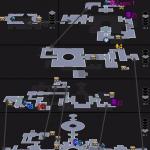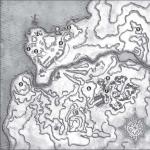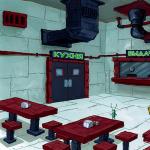Types of tests. Control and testing of products is the main component of certification
Obtaining mandatory certificates confirming the quality of goods, technologies and services is always associated with product testing, which makes it possible to establish the compliance of the certification object with existing standards. Such an examination is a logical component of the process of issuing quality certificates, representing in a documentary form the objective advantages and disadvantages of the examined goods. The results of product testing are protocols and expert opinions, which is provided in order to make the appropriate decision.
Targets and goals
The main task of product testing is an expert study of the consumer qualities of goods, services and technologies within the framework of existing standards. The purpose of such a process is to exclude low-quality products from circulation, thereby protecting the interests of the buyer and other citizens on a national scale. That is why the control and testing of products is considered the most important component of the technical regulation of the market, which translates trade and production into a civilized controlled format. The provisions of this procedure are regulated by the Laws “On technical regulation and "About certification".
Participants in product testing
The following parties are involved in the testing of products, in accordance with the current legislation:
Applicant who is the manufacturer or supplier of the certification object;
certification bodies and laboratories accredited by federal agencies executive power or national center RF;
representatives of local government from a special department for certification;
experts of central certification bodies (in special cases).
Accredited laboratories are directly involved in testing products, which develop research protocols attached to the applicant's package of documents. The law imposes certain restrictions on accredited organizations involved in the certification of goods. In particular, such enterprises cannot be direct or indirect producers or consumers of the studied goods and services. Each laboratory or certification center receives a certificate of the established form, which has an expiration date. In addition, such companies are entered in a single register, and the control over the issuance of certificates is carried out by the national certification body of the Russian Federation.
Product testing mechanism
The process begins with the submission of an application by the manufacturer or supplier of the object of certification to the appropriate regional center for issuing certificates. Then a contract is concluded and payment is made for services for testing products, which will be carried out by an accredited laboratory. The examination scheme then looks like this:1. Provision of samples of the investigated product for research, including all necessary documentation relating to the object of study.
2. Technical research consumer qualities and features of the production process of this product.
3. Analytical examination of the obtained results with the corresponding conclusions.
4. Preparation of product testing protocols for the certification center.
As a result, the applicant receives all Required documents for submission to the local certification center, in which the competent commission will decide on the possibility of issuing a certificate for this object.
At the same time, an accredited laboratory is personally responsible for the release into circulation of goods, technologies or services that may pose a threat to human health and the environment. If violations are detected during the product testing process, improperly certified objects can be recalled, and production will be suspended forcibly.
Thus, the control and testing of products for compliance with standards helps to protect the consumer and the environment from hazardous technologies and products, which positively affects the state and competitiveness of the market as a whole.
Testing of electronic equipment called experimental definition values of parameters and quality indicators of the product in the process of operation or when reproducing certain effects on the equipment according to a given program. Tests are one of the most important and final stages of production, because. their results are judged on the operational reliability of the product.
Tests can be control- for the purpose of product quality control and research, conducted to establish the relationship between the maximum permissible values of product parameters and the values of operating modes called boundary.
By timing tests are divided into normal and accelerated. Accelerated called tests that provide information on quality indicators in a shorter time than under normal operating conditions. They can be forced and reduced. forced tests are based on the intensification of processes that cause failures or damage by increasing loads (temperature, pressure, speeds, etc.). Abbreviated tests provide a reduction in testing time due to obtaining additional information outside the test, using extrapolations and other methods without intensifying the causes of failures.
According to the test method Distinguish between destructive and non-destructive tests.
Tests are carried out on stages of production and operation . Distinguish tests prototypes and mass-produced products. Main task prototype testing is the most complete identification of the compliance of their technological and operational characteristics with the requirements of technical specifications. Based on the results of these tests, called acceptance tests, the question of the advisability of introducing prototypes into mass production is decided. In this regard, tests are carried out very carefully according to an extended program under severe conditions and prolonged exposure to various climatic and mechanical factors. For prototypes and products of single production, the following types of tests are used: preliminary, finishing, departmental, interdepartmental, state (licensed). Preliminary (control) tests experimental products are carried out to determine the possibility of their presentation on acceptance tests. Finishing tests used in the process of product development to assess the impact of changes made to it in order to ensure the required quality indicators.
Mass-produced products, subjected to control tests, acceptance, periodic, type and certification.
Acceptance tests have the purpose of checking the compliance of manufactured products with the requirements of technical specifications. Periodic testing carried out in cases where specifications impossible to determine acceptance tests. Periodic tests allow you to monitor the maintenance of product quality at the required level. Type tests finished products are carried out before and after making changes to the design or manufacturing technology in order to check the effectiveness of the changes made or to compare the quality of products released at different times. Type tests shall be carried out according to a program that ensures comparability of test results before and after changes. Qualification tests serve to assess the level of product quality. Testing two or more products carried out under identical conditions to compare their quality characteristics are called comparative.
A variety of control tests are evaluation. They are carried out for such an assessment of product quality, in which it is not required to determine the values of its parameters.
Control tests can be solid or selective. With continuous tests, each product is checked, and with selective tests, only a part and, according to the data obtained, the suitability of the entire batch is judged. When developing sampling control, it is necessary to establish the number of tested products, the duration of the tests and the acceptance number (IF). Under the FC understand largest number defective products in the sample, in which the test results can be considered positive. If the number of defective items is greater than the IF, the test results are considered negative. In the latter case, two solutions are possible: to continue the control or to reject the entire batch, which can be subjected to a complete check or returned to the manufacturer (performer).
The probability of accepting a batch of products, the quality of which does not meet the established acceptable percentage of defective products (APDI), is called the risk of the customer (RZ). By agreement between the customer and the manufacturer, an acceptable quality level (QL) of products is established. The probability of rejecting a batch of products, the quality of which corresponds to the Criminal Code, is called the risk of the manufacturer (RI).
The scope and sequence of product testing is determined by the test program and technical requirements for a specific product. The main requirement for products subjected to climatic, mechanical and electrical tests is the preservation of the output (tested) parameters after testing within the limits established by the technical specifications.
Products before testing must pass the control and the stage of running-in. Burn-in reduces the likelihood of failures caused by latent manufacturing defects. Running-in significantly lengthens the manufacturing cycle, but increases product reliability. It is very important to establish the time and modes (thermal and electrical) for this operation.
According to paragraph 2 of the Decree of the Government of the Russian Federation of June 13, 2012 N 581one of the types of works (services) constituting such a licensed type of activity asdevelopment, production, testing, installation, installation, maintenance, repair, disposal and sale of weapons and military equipment,is the testing of weapons and military equipment.
For enterprises and organizations fulfilling (or intending to fulfill) the state defense order (hereinafter referred to as the State Defense Order), we offer a whole range of services to assist in obtaining (reissuing) a license for testing weapons and military equipment (licensing military equipment). More information about these services can be found on the pages "Assistance in licensing in the field of weapons and military equipment" and "Licensing in the field of weapons and military equipment testing" .
When evaluating the quality of any product (including military products), it is advisable to evaluate not only its functional and operational characteristics, but also the degree of impact environment at which the product retains the declared quality characteristics.
In order to avoid losses associated with the release of low-quality products, quality control of manufactured products should be an integral step in quality assurance. At the same time, weapons and military equipment tests are necessary not only in the production, but also in the development and repair of military products.
In accordance with GOST 16504-81, testing of industrial products is understood as the experimental determination of the quantitative and / or qualitative characteristics of the test object as a result of exposure to it; during its operation; when modeling an object and/or impact. The purpose of the test is to experimentally determine the actual (achieved) characteristics of the properties of the test sample of weapons and military equipment and to determine the degree of compliance of the created (manufactured, repaired) sample of weapons and military equipment terms of reference received from the customer, or specifications. These characteristics can be both quantitative and qualitative. The most important feature of any tests is the adoption of certain decisions based on their results, the conclusion about the suitability of a given sample of weapons and military equipment for use for its intended purpose. If the conclusion is negative, then the sample is returned for revision. Thus, the access of low-quality products to the user is blocked.
Under the test means used in such activities, understand the technical devices, substances and (or) materials for testing. This includes, first of all, test equipment. Also, the test tools include measuring instruments, both built into the test equipment and used in tests to measure certain characteristics of an object or control test conditions. Test tools should also include auxiliary technical devices for fixing the test object, recording and processing the results. Test tools also include basic and auxiliary substances and materials (reagents, etc.) used in testing.
Test equipment is a test tool that is technical device to reproduce test conditions. At the same time, any testing equipment in accordance with GOST R 8.568-97 is subjected to certification with a certain frequency.
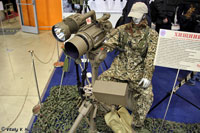 GOST 16504-81 highlights the following types of testing for influencing factors:
GOST 16504-81 highlights the following types of testing for influencing factors:
- Mechanical Tests
- Climate test
- Thermal testing
- Radiation testing
- Electrical Tests
- Electromagnetic testing
- Magnetic tests
- Chemical testing
- Biological testing
The listed types of tests are carried out to check the performance and (or) preservation appearance products within the limits established by scientific and technical documentation, under conditions and (or) after exposure to these factors.
According to the Decree of the Government of the Russian Federation of November 21, 2011 No. 957 “On the organization of licensing certain types Activities” (as amended by Decree of the Government of the Russian Federation of December 25, 2014 No. 1489) licensing of military equipment (its production, repair, maintenance, sale, installation, installation, testing and disposal) is a function of the Ministry of Industry and Trade (Ministry of Industry and Trade of the Russian Federation). Previously, these functions were performed by Rosoboronzakaz. The term of the license was a maximum of five years, while at present such licenses are issued indefinitely.
The need for licensing military equipment is obvious. Armament and military equipment (WME) poses a direct danger to human life. It must be in a state of constant combat readiness - this is required by the interests of the state, the maintenance of its defense capability. Therefore, enterprises that carry out testing, development, production, installation, installation, repair, maintenance and sale of weapons and military equipment have a huge additional responsibility to ensure the protection and defense of military equipment parks, their fire protection and the exclusion of spontaneous explosion of ammunition or leakage of poisonous substances.
Defense production is a branch of state industry. However, many enterprises and organizations of the Russian military-industrial complex also produce civilian products, so they also need to license military equipment. The same testing, research and repair enterprises that are engaged in the installation and maintenance of weapons and military equipment are controlled by military missions (VP) of the Ministry of Defense of the Russian Federation.
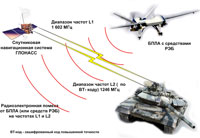 Military representations of the Ministry of Defense perform the following functions:
Military representations of the Ministry of Defense perform the following functions:
- military control of work on the installation and maintenance of weapons and military equipment carried out by controlled enterprises that have passed and are executors of the state defense order (SDO); works must comply with the terms of state contracts and technical documentation;
- acceptance of works and services for installation and maintenance IWT;
- analysis and adjustment of the calculation of the cost of works and services performed by the executors of the State Defense Order.
Tests of weapons and military equipment are in many ways similar to similar measures for civilian equipment. Special attention is given to testing military vehicles, complexes and systems. After all, their reliability plays a primary role in increasing the country's defense capability. Failures, "weak points" and malfunctions of weapons and military equipment must be detected in a timely manner and as quickly as possible. To do this, new and existing weapons are subjected to bench and full-scale tests. In this case, the commission must necessarily include representatives of the VP of the Ministry of Defense of the Russian Federation. During testing, products operate in extreme modes, which allows you to collect the necessary statistics controlled parameters with the maximum degree of control. As a result, weapons and military equipment can be effectively modernized and improved.
Despite certain problems and difficulties in modern conditions facing the defense industry and the Russian Armed Forces, weapons and military equipment is in a state of constant development. Andmilitary equipment licensingplays an important role in this process.
